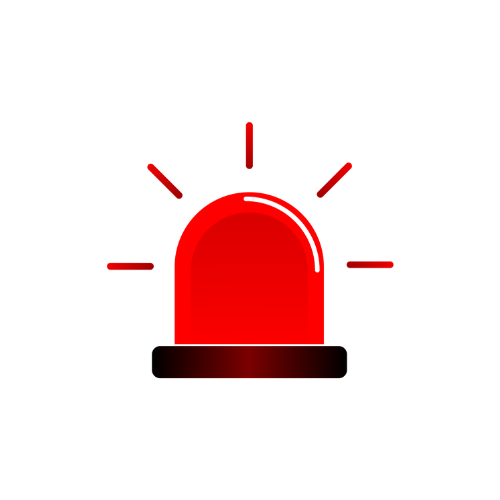Are you tired of feeling overwhelmed by panic attacks? Do you wish there was a way to find immediate relief when you need it most? Look no further, because in this article, we have gathered proven strategies that can offer you instant help for panic attacks.
Panic attacks can strike at any time, leaving you feeling out of control and helpless. But there’s good news – you don’t have to suffer in silence. With these effective techniques, you can regain control and find the instant relief you crave.
So, how can you find help with panic attacks now? What are the immediate strategies that can provide you with the relief you desperately seek? Let’s explore these techniques together and empower you to face panic attacks head-on.
In this article, we will delve into the underlying causes of panic attacks, their symptoms, and practical ways to manage and prevent them. From deep breathing techniques to mindfulness and self-talk, you’ll discover a variety of tools that can make a real difference in your life.
Don’t let panic attacks control your life any longer. Read on to learn effective strategies for instant relief and take back control over your well-being.
Quick Recommendation: Our blog is filled with tips and tricks to overcome anxiety and panic attacks. If you’re seeking a Proven Panic Attack Treatment, we recommend Panic Away.
Understanding Panic Attacks and Their Symptoms
Panic attacks can be scary, but knowing what they feel like is key to handling them. These sudden feelings of fear or panic can happen without warning. They leave you feeling overwhelmed and helpless. By spotting the signs of panic attacks, you can take charge of your anxiety and find ways to deal with it.
Some common symptoms of panic attacks include:
- Racing heart and palpitations
- Shortness of breath or feeling like you can’t catch your breath
- Trembling or shaking
- Sweating excessively
- Chest pain or discomfort
- Nausea or stomach distress
- Dizziness or lightheadedness
These physical signs are often paired with feelings of fear or a sense of doom. Panic attacks can go on for several minutes or more. They can really get in the way of your daily life.
Panic attacks are not the same as normal anxiety or stress. While anxiety can make you feel some of these physical things, panic attacks are much more intense and come on suddenly. The fear during an attack can be so strong that some people think they’re having a heart attack.

If you’re facing panic attacks, it’s important to get help. Knowing the symptoms is the first step to finding support. Next, we’ll look at ways and techniques to help you cope with and manage panic attacks.
Deep Breathing Techniques to Calm Panic Attacks
When panic hits, deep breathing can really help. It’s a simple way to calm down and take back control. Adding deep breathing to your daily life can ease panic attacks now and prevent them later.
Find a quiet spot to focus on your breathing. Close your eyes and take a moment to settle.
1. Diaphragmatic Breathing
Put one hand on your chest and the other on your belly. Breathe in deeply through your nose, letting your belly rise. Exhale slowly through your mouth, feeling your belly drop. Keep breathing deeply, focusing on your belly’s movement.
2. Box Breathing
Box breathing means inhaling, holding, exhaling, and holding again for the same time. Start by breathing in for a count of four. Hold your breath for four, then breathe out for four. Hold again for four before starting over. Do this a few times to relax fully with each breath.
3. 4-7-8 Breathing
The 4-7-8 method is great for calming down and easing anxiety. Close your eyes and breathe in for four counts. Hold for seven, then breathe out for eight. Do this cycle three to four times to feel calm and peaceful.
Adding deep breathing to your daily life can help with anxiety. Use these exercises when you’re feeling overwhelmed or as a regular way to take care of yourself.
It might take some time to find what works for you. Listen to your body and adjust these techniques as needed. With time and effort, deep breathing can be a key tool for feeling better and staying well.
Quick Recommendation: Our blog is filled with tips and tricks to overcome anxiety and panic attacks. If you’re seeking a Proven Panic Attack Treatment, we recommend Panic Away.

Mindfulness and Meditation for Panic Attack Relief
Finding relief during a panic attack can seem hard. But, using mindfulness and meditation daily can help manage panic attacks and lessen their frequency. These methods are proven to relax, reduce anxiety, and offer long-term relief.
Mindfulness means being fully in the moment, noticing your thoughts, feelings, and body without judging them. It helps you become aware and accept what you’re going through. This can make dealing with panic attacks easier.
Meditation focuses your attention and stops worrying thoughts. Regular meditation builds calm and emotional balance. This makes it easier to handle panic attacks when they happen.
Studies show mindfulness and meditation help with panic attacks. Mindfulness-based stress reduction (MBSR) programs combine these practices. They reduce how severe and how often panic attacks happen.
During a panic attack, mindfulness lets you watch your thoughts and feelings without getting lost in them. Accepting these can stop them from getting worse and lessen the anxiety. Meditation during a panic attack can also calm you down, helping you take back control of your mind and body.
Adding mindfulness and meditation to your daily life can also prevent panic attacks. It lowers stress and helps you deal with anxiety triggers better. Regular practice builds self-awareness and emotional strength, making panic attacks less likely.
Remember, mindfulness and meditation take time and effort to learn. Start with a few minutes each day focusing on your breath or following guided meditation. As you get better, you can do these activities more often and add them to your daily life.
In conclusion, mindfulness and meditation are great tools for handling panic attacks. They help you stay in the moment and build a meditation habit. Add these to your daily life and see how they can change things for the better.
The Power of Positive Self-Talk During Panic Attacks
When you’re in the middle of a panic attack, how you think and feel matters a lot. Using positive self-talk can really help you deal with anxiety. By saying kind things to yourself, you can change your thoughts and feel more in charge.
During a panic attack, negative thoughts and fears can take over. But, by using positive self-talk, you can stop this and think more positive thoughts. Instead of worrying about the worst, tell yourself that panic attacks are short-lived and you can handle them.
To use positive self-talk, start by finding phrases that make you feel better. These could be things like:
- “I am strong and capable of overcoming this panic attack.”
- “I have successfully managed panic attacks in the past, and I can do it again.”
- “I am safe, and this feeling will pass.”
- “I am in control of my thoughts and emotions.”
Repeat these sayings to yourself, either quietly or out loud, when you’re having a panic attack. This helps you focus on positive thoughts and makes you feel calmer and more secure.
Also, try to picture yourself handling panic attacks well. Imagine staying calm and getting through it, and see a good outcome. This can make you believe more in your ability to deal with anxiety.
Positive self-talk is a strong tool in fighting panic attacks. By adding it to how you cope, you can change your mindset, take back control, and ease your anxiety.
Seeking Professional Help for Panic Attacks
If you’re struggling with panic attacks, know you don’t have to face them alone. Getting professional help can give you the support and guidance you need. This can help you overcome these tough experiences.
There are many ways to get help, including therapy. Therapy for panic attacks means working with a mental health expert who knows about anxiety. They can share insights, strategies, and tools to help you manage your panic.
Cognitive-Behavioral Therapy (CBT) is a common therapy for panic attacks. It helps you change negative thoughts and behaviors that lead to panic. Through CBT, you’ll learn how to cope, relax, and challenge stressful thoughts.
Exposure Therapy is another effective therapy. It slowly exposes you to things that cause panic, helping you get used to them. By facing your fears in a safe place, you can better manage your panic.
When looking for help, find a therapist who understands your needs and makes you feel safe. Look for therapists with experience in anxiety and have initial talks to find the right one for you.
Remember, asking for help doesn’t show weakness. It shows strength and courage. With a skilled therapist, you can learn coping skills, understand your panic triggers, and find lasting relief.
By getting professional help for panic attacks, you’re taking a big step towards taking back control of your life. With a trained therapist’s support, you can develop strategies to handle panic attacks and feel more at peace.
Lifestyle Changes for Panic Attack Prevention
Preventing panic attacks can be easier with some lifestyle changes. Healthy habits, stress management, and self-care can help. These steps can lead to a calmer and more balanced life.
Starting with a healthy routine is key. Getting enough sleep, eating well, and exercising regularly boosts your mental health. A well-rested and nourished body is better at handling stress and anxiety, lowering the chance of a panic attack.
It’s also important to manage stress well. Activities like yoga, deep breathing, or hobbies you enjoy can reduce stress. Find what works for you and make it part of your daily life.
The Power of Self-Care
Self-care is crucial for preventing panic attacks. Taking time for yourself and doing things that relax and help you think can be very helpful. This might include journaling, mindfulness, taking baths, or enjoying nature.
Setting boundaries and saying no when needed is also key. It’s important to know your limits and put your mental and emotional health first.
Adding these lifestyle changes to your daily life can greatly lower the chance of panic attacks. Remember, be patient with yourself as you try these changes and find what suits you best.
- Maintain a healthy routine with enough sleep, a balanced diet, and regular exercise.
- Practice stress management techniques such as yoga and deep breathing exercises.
- Prioritize self-care by engaging in activities that promote relaxation and self-reflection.
- Establish boundaries and learn to say no when necessary.
Conclusion
Panic attacks can feel like the world is spinning out of control. But, there are ways to find peace again. By trying the strategies we talked about and getting help when you need it, you can beat panic attacks.
It’s important to remember that you’re not alone. Many people face these challenges and find ways to overcome them. With the right support and tools, you can too.
Don’t hesitate to reach out for help. Whether it’s talking to a therapist, joining a support group, or finding online resources, there are many options available. You deserve to live a life free from the grip of panic attacks.
Remember, you have the power to take control of your well-being. By facing your fears and seeking support, you can find a path to recovery. Take a deep breath, be brave, and know that you can get through this.
Quick Recommendation: Our blog is filled with tips and tricks to overcome anxiety and panic attacks. If you’re seeking a Proven Panic Attack Treatment, we recommend Panic Away.

